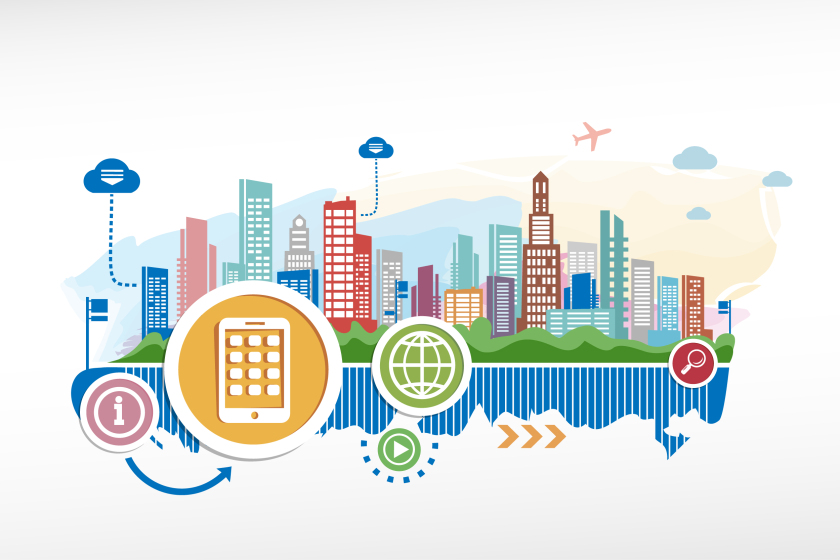-

Project Launch: Future of Demand Responsive Transport
-
9th May 2017
-
-
by Bill Freeman
Chief Executive
CTA is launching a new project this month with the Institution of Mechanical Engineers (IMechE) to consider what major breakthroughs are driving the interest and growth in demand-responsive transport and what that means for access and inclusion. We’ll publish more information about the project early next month in CTA’s magazine, Together.
Here we set out what CTA is bringing to this discussion, which he first shared in his speech about Mobility as a Service to the recent MaaS Reloaded event in Manchester organised by the TravelSpirit Foundation.
Demand-responsive transport, such as door-to-door and dial-a-ride services, are core business for community transport and a growing market with commercial operators moving into the space through brands such as ArrivaClick, Slide Bristol and Driving Miss Daisy UK and more wide-scale transformation through initiatives such as Mobility as a Service.
More and more of us are making journeys without fixed routes or timetables in vehicles we don’t own, often with people we don’t know. If this model is set to grow and become more mainstreamed then we need to talk about what that’s going to look and feel like.
We need to ask how many of us will have this this as our main experience of transport and how do we make sure this boosts access and inclusion for the most vulnerable and potentially isolated groups in our communities.
I like to focus on three design principles for doing more and doing better for people who have poor access to transport and consequently face barriers to aspirations and achievement, and to having choice and control in their lives.
My first is that targeting improvements on those with the greatest needs, makes it better for everyone else too.
This is a simple premise – if something isn’t good for someone with a visual impairment, arthritis or Alzheimers then chances are it is not that great for lots of other people too.
By putting the needs of those who face the most disadvantage central to the design of any new service or infrastructure from the outset we can create many benefits and save time and money through not having to remedy so many problems that arise down the line. Better to build it now than fix it later.
It also means can find a better way of balancing and blending the convenience and speed which might be imperatives for many travellers with concerns about confidence and safety that may be felt more deeply by the most vulnerable.
Secondly, make sure supporting independence doesn’t create new forms of isolation
I often hear that the best way to manage demand better is to drive it down. My favourite is always that we can reduce the need to transport older people to the shops by helping them order their groceries online so they don’t need to go out.
Loneliness and isolation have been found not only to reduce overall health and wellbeing but also to increase the risk of dying prematurely in older age. Figures shared by the Campaign to End Lonelinessshow us that two fifths of all older people (about 3.9 million) say the television is their main company (Age UK, 2014) and the health effect that this can have on people’s mortality is comparable to smoking 15 cigarettes a day.
Many service users and their representatives would rightly be resistant to innovations that reduce their social-connectedness and foster greater isolation. As would people from CTA’s member organisations, who wear their commitment to keeping people connected and tackling isolation on their sleeves.
This is relevant to this discussion as many of the innovations we hear about in the transport space are about personalisation and autonomy. If we’re being pro-social then we must champion the merits of a shared transport experience where taking a journey with others helps our physical and mental well-being.
So whilst helping people stay independent is in our DNA, let’s hear it for interdependence once in a while.
My last is build on the best of what’s there already
Community Transport Association sometimes get asked to discuss ideas for new services and a recurring theme is the ‘year zero’ approach, talking about a place as if there’s nothing there already.
A more integrated passenger transport network that meets more needs has to be built from the ground up. This means being mindful of, and building on, existing assets and capacity within communities so the ‘ground-up’ part is authentic and rooted in the experiences of people who know the patch and the priorities. This is something CTA’s members can confidently claim as one of their hallmarks.
-
-
- About CTA
- /
- CTA Membership
- /
- CTWeek24
- /
- Policy & Research
- CommunitySolutions: A Manifesto for the Next UK General Election
- Our Campaigning Guide for Community Transport
- Our Policy Work
- Join Our Mapping England Passenger Survey
- Aneurin Bevan Transport to Health
- Climate Action in Scotland
- conneCTing England Programme
- Mapping Scotland Project
- Mapping Wales
- Mapping England
- Tackling Loneliness in England
- Healthy Communities in Scotland
- /
- Advice & Support
- /
- Training
- /
- Events
- /